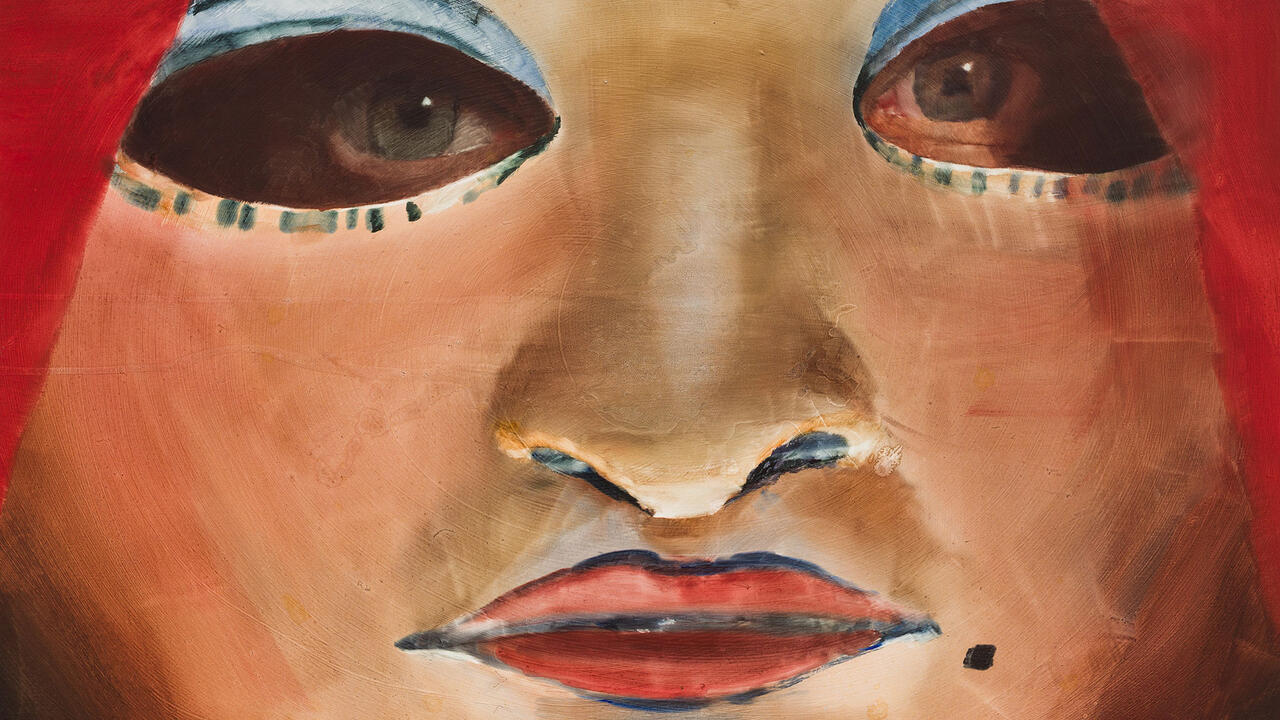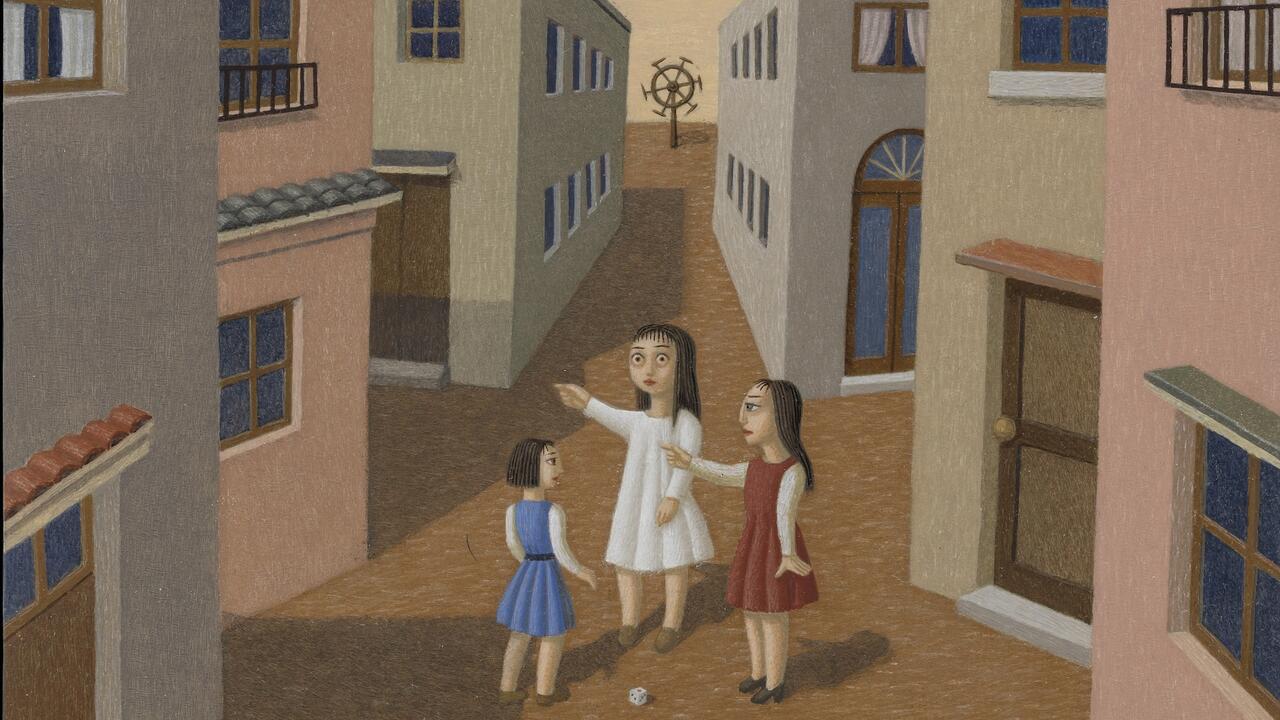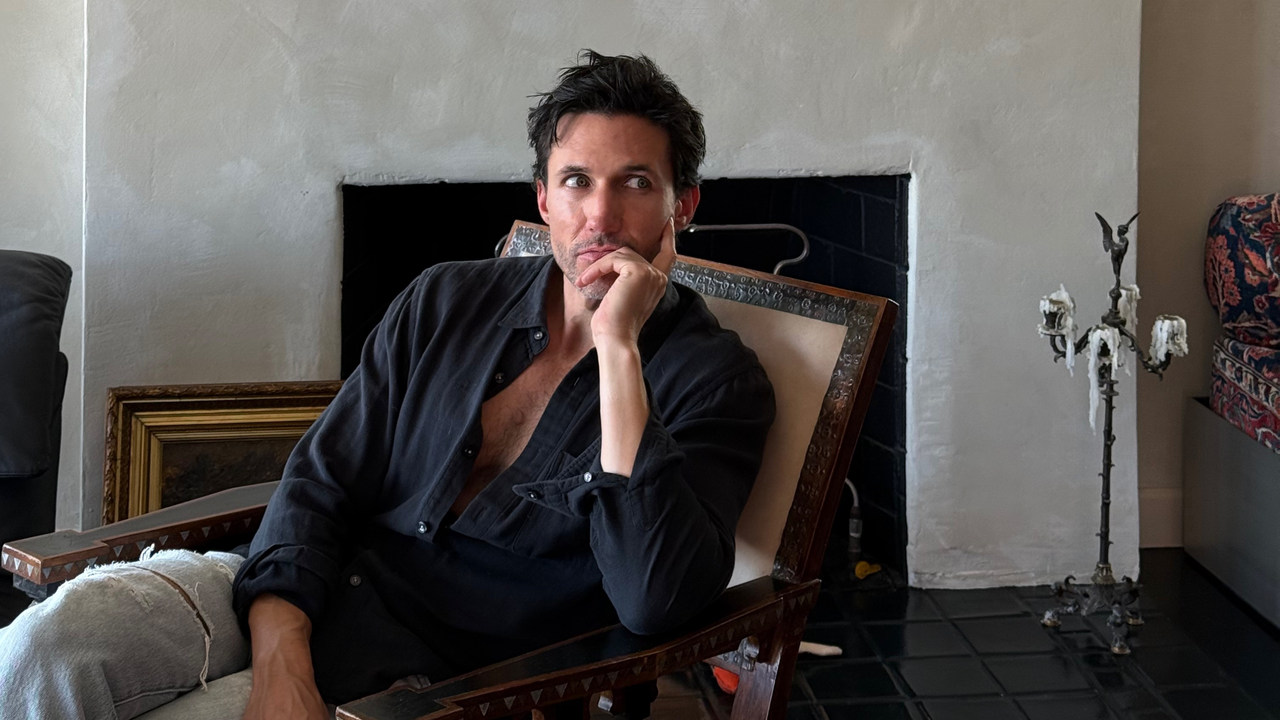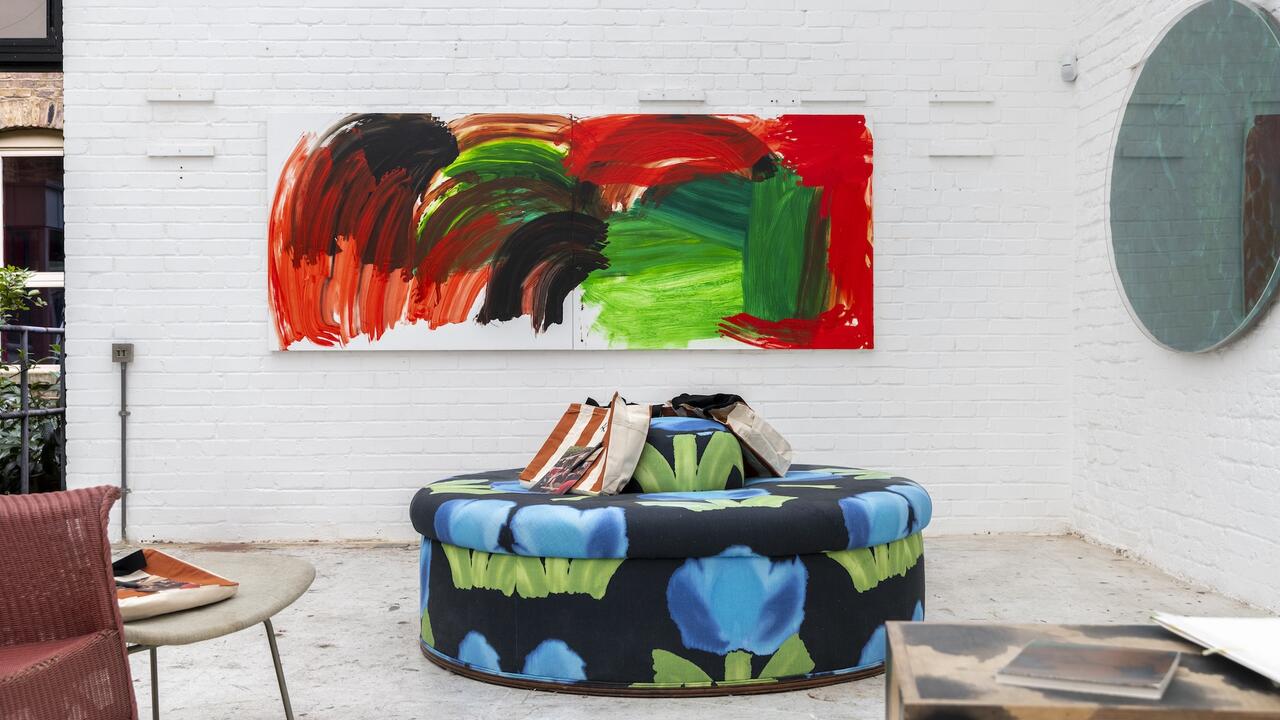True Grit
In the Desert
In the Desert
 In 1849 Gustave Flaubert set out from France to travel through the Middle East with his friend, the photographer and travel writer Maxime du Camp. Flaubert seemed to enjoy himself - 'splendid things gleam in the dust' he reported happily from Egypt. 1 However, despite the preoccupations of his travelling companion, Flaubert loathed photography, describing it as 'that stupid job'. 2 As a result, only one image exists of him on this trip: 'I would never allow anyone to photograph me', he wrote. 'Max did it once, but I was in Nubian costume, standing, and seen from a considerable distance, in a garden.' 3 Du Camp was less accommodating towards the feelings of local Arabs, who called photographs, in a prescient paraphrasing of Flaubert's ideas about the function of the novel, 'mirrors that remember'. Writing of the difficulties he encountered in encouraging their servant, Hadji Ismael, to pose in order to lend a sense of scale to a photograph of monument or desert, du Camp wrote: 'I finally succeeded by means of a trick whose success will convey the depth of naivety of these poor Arabs. I told him that the brass tube of the lens jutting from the camera was a cannon, which would vomit a hail of shot if he had the misfortune to move - a story which immobilised him completely, as can be seen by my plates.' 4 Du Camp's photographs are included, along with the work of 15 other photographers, in the 'Historical Photography' section of 'The Desert', at the Fondation Cartier in Paris. The show takes as its point of departure the relationship between the invention of photography and discovery of the desert, and includes the work of such 19th and early 20th-century photographers as the American archaeologist John Beasley Greene, who depicted monuments emerging ghost-like from the sands; Gaëtan Gatian de Clérambault, a psychiatrist who, between 1915 and 1920 took nearly 4000 photographs of veiled Moroccan women; and Sir Wilfred Thesiger, the writer, explorer, spy, and naturalist, who had a revelation of his attraction to the desert while crossing the Arabian Hedjaz range on camel-back. These atmospheric photographs reveal dreamy acres of dunes and crumbling ruins, plodding camels and the blurred faces of distant, often veiled inhabitants. But - as du Camp's anecdote so clearly illustrates - they show little of actual desert life; instead the desert is reinforced as an idealised, romantic site, the relentlessness of its terrain embodying the myth of the unchanging East. The show's contemporary section, which includes photographs and videos of deserts in Australia, the US, Mali, and Egypt, mostly by artists who are not from these places, perpetuates this gulf between image and actuality. Their depictions emanate a feeling that the desert remains, to people who don't live there, a site so blank and impenetrable it can be anything you want it to be: destination for reinvention, disappearance, invasion, or hallucination. From the blinding clarity of its light, things and people emerge as if from nowhere, much in the same way images magically appear on paper in the dim light of the dark room. In 1857 Eugène Fromentin, a writer and painter susceptible to melancholy reflection, wrote that he loved the desert because it is never lovely: 'The more light the desert receives, the darker it seems to become' he observed, somewhat obliquely. 5 Fromentin's tale is one of many told by Sven Lindqvist in his wonderful book Desert Divers (2000). Part travelogue, part literary history, and part autobiography, it provides an illuminating introduction not only to the terrible history of colonial exploitation of the Sahara that gave Europeans permission to conduct their unilateral affair with the desert, but also examines the 19th century's enduring fascination with 'the Orient'. 'One must ask', Lindqvist writes, 'what a Romantic is doing in the desert at all. There are no leafy groves or fragrant meadows - desert Romanticism appears incomprehensible from a distance. Up close it becomes absurd. What is romantic about an endless desert pit?' 6 The answer lies, of course, in the appeal of its history of violence and intrigue; a climate and geography that fanned the Romantic preoccupation with escape, and 'authentic' feelings and situations. Lindqvist's interest in the desert began with his fascination with writing. He cites Antoine de Saint-Exupéry - pilot, airport chief of a small town on the edge of the Sahara, and author of The Little Prince (1943) - as one of his main influences, observing that 'when he called the desert sun "a pale soap bubble in the mist" I knew he had seen it. He had been there. It was in his language.' 7 The writers and adventurers who travelled through the desert populate the pages of Lindqvist's book like characters from Tintin: the Frenchman Michel Vieuchange, for example. One day in 1930, disguised as woman, he departed for Smara, a Saharan town left in ruins by the French. He spent most of his journey hidden in a pannier, and when he finally arrived, buried a message in a bottle as proof of his arrival, before crawling back into the pannier to begin the return journey. Another preoccupation of Lindqvist's is Pierre Loti, the early 20th-century best-selling French novelist and desert romancer, who returned from his dusty travels to Rochefort, a small town on the French Atlantic coast, and transformed his family home into a museum of his obsessions. Behind the house's austere bourgeois façade, he built a Gothic hall, Renaissance salon, Japanese, Chinese, Egyptian, and Turkish rooms, a shrine to his childhood, and a Syrian mosque in which he smoked and wept at a former lover's tombstone. Obsessed with role-play, every photograph of him reveals a different persona: the god Osiris, a circus performer, a Turkish gentleman. He buried his relatives and favourite pets beneath the floor. 'No wonder Loti loved the desert,' Lindqvist observes 'in the desert all changes have already occurred. Everything has gone. Only eternity remains.' 8 When Loti's novel The Desert was published in 1895, Isabelle Eberhardt, a young Swiss woman, was 18 years old. Loti was her favourite writer. In 1900, she was alone in the world, but at home in the Sahara. 'The only form of bliss, destiny will ever grant me', she wrote in her diary, 'is to be a nomad in the great deserts of the life.' 9 Like Loti, she was most comfortable in disguise, assuming the identity of a fictitious young Arab male, the author Si Mahomoud Essadi. She died at the age of 27 in a flash-flood, after experiencing a nomadic life of intrigue, and writing a few terse, Modernist stories. Like the ocean, the desert has rarely been a destination in itself, but rather a place to journey through. Diving is the central metaphor of Lindqvist's book, an image he explores from different angles, some literary or poetic, but one factual. In the mid-19th century, after the French had invaded a desert village, it was their practise to throw bodies down the well, to pollute the water. Well-divers, the poorest of the deserts' poor, were forced to clear them. Lindqvist grimly concludes: 'The history of imperialism is a well full of corpses.' 10 Saint-Exupéry repeatedly returned to the image of the diver, describing the sensation of flying across the desert as that of 'a deep sea diver out of his element'. 11 It was a simile that also occurred to Flaubert: 'We have the impression', he wrote, 'we are on a beach, and about to see the sea; our moustaches taste of salt, the wind is sharp and bracing, footprints of jackals and camels hang obliterated by the wind.' 12 The desert as an enduring metaphor for people reinventing themselves or getting lost on the edge of alien space, proliferated throughout the 20th century in fiction and film - notably in Paul Bowles' The Sheltering Sky (1949), which was made into a film by Bernardo Bertolucci in 1990, Michelangelo Antonioni's Zabriskie Point (1970) and The Passenger (1975), Pasolini's Medea (1970) and The Gospel According to St Matthew (1964), and, more recently, Claire Denis' astonishing Beau Travail (Good Work, 1999). Trying to imagine the way the first photographs of the desert marked the European imagination is perhaps only possible when you consider the collective shock that was experienced when the first photographs of the Moon were returned to Earth. Although it might seem strange that the seemingly empty magnitude of the desert's surface has exerted such imaginative appeal, who among us hasn't, at some time, craved reinvention, silence, sun, and emptiness (all elemental attributes associated with freedom)? The only tragedy of such dreams is that, unlike the Moon, the desert, which Saint-Exupéry described as 'the most beautiful and saddest landscape in the world', is already taken. 13
In 1849 Gustave Flaubert set out from France to travel through the Middle East with his friend, the photographer and travel writer Maxime du Camp. Flaubert seemed to enjoy himself - 'splendid things gleam in the dust' he reported happily from Egypt. 1 However, despite the preoccupations of his travelling companion, Flaubert loathed photography, describing it as 'that stupid job'. 2 As a result, only one image exists of him on this trip: 'I would never allow anyone to photograph me', he wrote. 'Max did it once, but I was in Nubian costume, standing, and seen from a considerable distance, in a garden.' 3 Du Camp was less accommodating towards the feelings of local Arabs, who called photographs, in a prescient paraphrasing of Flaubert's ideas about the function of the novel, 'mirrors that remember'. Writing of the difficulties he encountered in encouraging their servant, Hadji Ismael, to pose in order to lend a sense of scale to a photograph of monument or desert, du Camp wrote: 'I finally succeeded by means of a trick whose success will convey the depth of naivety of these poor Arabs. I told him that the brass tube of the lens jutting from the camera was a cannon, which would vomit a hail of shot if he had the misfortune to move - a story which immobilised him completely, as can be seen by my plates.' 4 Du Camp's photographs are included, along with the work of 15 other photographers, in the 'Historical Photography' section of 'The Desert', at the Fondation Cartier in Paris. The show takes as its point of departure the relationship between the invention of photography and discovery of the desert, and includes the work of such 19th and early 20th-century photographers as the American archaeologist John Beasley Greene, who depicted monuments emerging ghost-like from the sands; Gaëtan Gatian de Clérambault, a psychiatrist who, between 1915 and 1920 took nearly 4000 photographs of veiled Moroccan women; and Sir Wilfred Thesiger, the writer, explorer, spy, and naturalist, who had a revelation of his attraction to the desert while crossing the Arabian Hedjaz range on camel-back. These atmospheric photographs reveal dreamy acres of dunes and crumbling ruins, plodding camels and the blurred faces of distant, often veiled inhabitants. But - as du Camp's anecdote so clearly illustrates - they show little of actual desert life; instead the desert is reinforced as an idealised, romantic site, the relentlessness of its terrain embodying the myth of the unchanging East. The show's contemporary section, which includes photographs and videos of deserts in Australia, the US, Mali, and Egypt, mostly by artists who are not from these places, perpetuates this gulf between image and actuality. Their depictions emanate a feeling that the desert remains, to people who don't live there, a site so blank and impenetrable it can be anything you want it to be: destination for reinvention, disappearance, invasion, or hallucination. From the blinding clarity of its light, things and people emerge as if from nowhere, much in the same way images magically appear on paper in the dim light of the dark room. In 1857 Eugène Fromentin, a writer and painter susceptible to melancholy reflection, wrote that he loved the desert because it is never lovely: 'The more light the desert receives, the darker it seems to become' he observed, somewhat obliquely. 5 Fromentin's tale is one of many told by Sven Lindqvist in his wonderful book Desert Divers (2000). Part travelogue, part literary history, and part autobiography, it provides an illuminating introduction not only to the terrible history of colonial exploitation of the Sahara that gave Europeans permission to conduct their unilateral affair with the desert, but also examines the 19th century's enduring fascination with 'the Orient'. 'One must ask', Lindqvist writes, 'what a Romantic is doing in the desert at all. There are no leafy groves or fragrant meadows - desert Romanticism appears incomprehensible from a distance. Up close it becomes absurd. What is romantic about an endless desert pit?' 6 The answer lies, of course, in the appeal of its history of violence and intrigue; a climate and geography that fanned the Romantic preoccupation with escape, and 'authentic' feelings and situations. Lindqvist's interest in the desert began with his fascination with writing. He cites Antoine de Saint-Exupéry - pilot, airport chief of a small town on the edge of the Sahara, and author of The Little Prince (1943) - as one of his main influences, observing that 'when he called the desert sun "a pale soap bubble in the mist" I knew he had seen it. He had been there. It was in his language.' 7 The writers and adventurers who travelled through the desert populate the pages of Lindqvist's book like characters from Tintin: the Frenchman Michel Vieuchange, for example. One day in 1930, disguised as woman, he departed for Smara, a Saharan town left in ruins by the French. He spent most of his journey hidden in a pannier, and when he finally arrived, buried a message in a bottle as proof of his arrival, before crawling back into the pannier to begin the return journey. Another preoccupation of Lindqvist's is Pierre Loti, the early 20th-century best-selling French novelist and desert romancer, who returned from his dusty travels to Rochefort, a small town on the French Atlantic coast, and transformed his family home into a museum of his obsessions. Behind the house's austere bourgeois façade, he built a Gothic hall, Renaissance salon, Japanese, Chinese, Egyptian, and Turkish rooms, a shrine to his childhood, and a Syrian mosque in which he smoked and wept at a former lover's tombstone. Obsessed with role-play, every photograph of him reveals a different persona: the god Osiris, a circus performer, a Turkish gentleman. He buried his relatives and favourite pets beneath the floor. 'No wonder Loti loved the desert,' Lindqvist observes 'in the desert all changes have already occurred. Everything has gone. Only eternity remains.' 8 When Loti's novel The Desert was published in 1895, Isabelle Eberhardt, a young Swiss woman, was 18 years old. Loti was her favourite writer. In 1900, she was alone in the world, but at home in the Sahara. 'The only form of bliss, destiny will ever grant me', she wrote in her diary, 'is to be a nomad in the great deserts of the life.' 9 Like Loti, she was most comfortable in disguise, assuming the identity of a fictitious young Arab male, the author Si Mahomoud Essadi. She died at the age of 27 in a flash-flood, after experiencing a nomadic life of intrigue, and writing a few terse, Modernist stories. Like the ocean, the desert has rarely been a destination in itself, but rather a place to journey through. Diving is the central metaphor of Lindqvist's book, an image he explores from different angles, some literary or poetic, but one factual. In the mid-19th century, after the French had invaded a desert village, it was their practise to throw bodies down the well, to pollute the water. Well-divers, the poorest of the deserts' poor, were forced to clear them. Lindqvist grimly concludes: 'The history of imperialism is a well full of corpses.' 10 Saint-Exupéry repeatedly returned to the image of the diver, describing the sensation of flying across the desert as that of 'a deep sea diver out of his element'. 11 It was a simile that also occurred to Flaubert: 'We have the impression', he wrote, 'we are on a beach, and about to see the sea; our moustaches taste of salt, the wind is sharp and bracing, footprints of jackals and camels hang obliterated by the wind.' 12 The desert as an enduring metaphor for people reinventing themselves or getting lost on the edge of alien space, proliferated throughout the 20th century in fiction and film - notably in Paul Bowles' The Sheltering Sky (1949), which was made into a film by Bernardo Bertolucci in 1990, Michelangelo Antonioni's Zabriskie Point (1970) and The Passenger (1975), Pasolini's Medea (1970) and The Gospel According to St Matthew (1964), and, more recently, Claire Denis' astonishing Beau Travail (Good Work, 1999). Trying to imagine the way the first photographs of the desert marked the European imagination is perhaps only possible when you consider the collective shock that was experienced when the first photographs of the Moon were returned to Earth. Although it might seem strange that the seemingly empty magnitude of the desert's surface has exerted such imaginative appeal, who among us hasn't, at some time, craved reinvention, silence, sun, and emptiness (all elemental attributes associated with freedom)? The only tragedy of such dreams is that, unlike the Moon, the desert, which Saint-Exupéry described as 'the most beautiful and saddest landscape in the world', is already taken. 13
1. Gustave Flaubert, Flaubert in Egypt, trans. Francis Steegmuller, Penguin Books, London, 1972, p. 44 2. Ibid., p. 172 3. Ibid., p. 56 4. Ibid., p. 102 5. Sven Lindqvist, Desert Divers, trans. Joan Tate, Granta Books, London, 2000, p. 49 6. Ibid., p. 49 7. Ibid., p. 17 8. Ibid., p. 68 9. Ibid., p. 81 10. Ibid., p. 63 11. Antoine de Saint-Exupéry, Southern Mail, trans. Curtis Cate, Harcourt Brace & Company, Florida, 1971, p. 6 12. Flaubert in Egypt, op. cit., p. 56 13. Antoine de Saint-Exupéry, The Little Prince, trans. Irene Testot-Ferry, Wordsworth Editions, Hertfordshire, 1995, p. 109














